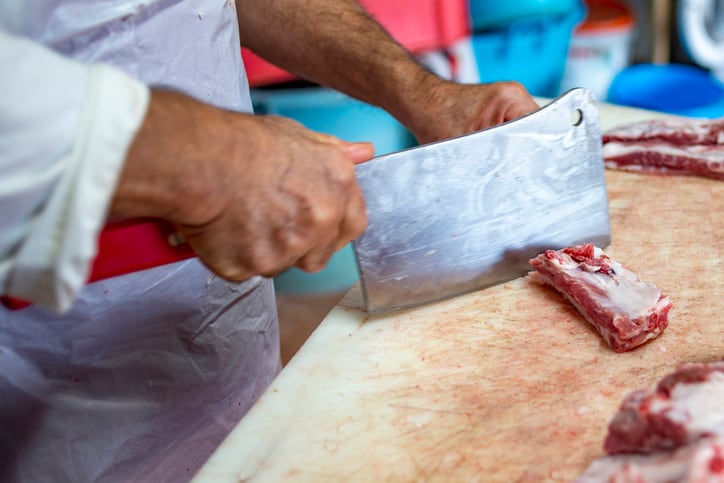The funds will bolster the administration’s four-prong Action Plan for a Fairer, More Competitive and More Resilient Meat and Poultry Supply Chain, also announced today, which seeks to support workers and independent processors, strengthen protections for farmers, ranchers and consumers, enforce fair competition and increase pricing transparency.
The move comes at a time when Americans are facing record inflation, and the Biden administration is under pressure to rein in rising prices, including a 6.4% price jump in food overall in November with some segments rising even faster – including meat, poultry, fish and eggs, which increased 13%, and beef which shot up 21%.
While many factors contribute to the rapid rise in inflation, including supply chain and labor challenges, the Biden Administrated has pointed an accusatory finger at large corporations that dominate industries, and suggests that breaking up alleged monopolies will drive down prices by fostering competition.
“Over the last few decades, we’ve seen too many industries become dominated by a handful of large companies that control most of the business and most of the opportunities – rising prices and decreasing options for American families, while also squeezing out small business and entrepreneurs,” the White House said in a statement this morning.
“The meat and poultry processing sector is a textbook example, with lack of competition hurting consumers, producers and our economy,” it added, noting that four large meat-packing companies control 85% of the beef market, four processors control 54% of the poultry market and four processors control 70% of the pork market.
The White House argues this concentration of control comes “at the expense of both farmers – who make less – and consumers – who pay more.”
For example, it argues, ranchers today make about 39 cents on the dollar and hog farmers make about 19 cents compared to fifty years ago when they made 60 cents and 40-60 cents on the dollar respectively.
“Even as farmers’ share of profits have dwindled, American consumers are paying more – with meat and poultry prices now the single largest contributor to the rising cost of food people consume at home,” the White House said.
Industry pushes back: White House’s focus on consolidation is an over simplification of higher prices
Not everyone agrees with the White House’s assessment of why meat and poultry prices are rising or its approach to inflation.
In the fall, when the White House first pointed a finger at large meat processors as part of the problem, Tyson Food pushed back, arguing that it is inaccurate to suggest that consolidation is leading to higher prices.
Indeed, Tyson argued “scale allows for efficiency, leading to lower prices for American families,” noting it has invested more than $15bn in 11,000 independent farms to source cattle, hogs and chickens.
It also noted the price increase in meat and poultry is not due to consolidation but rather “unprecedented market conditions,” including the pandemic and severe weather conditions that lead to a “drastic drop in meat processors’ abilities to operate at full capacity,” which led to a oversupply of live cattle and an undersupply of beef at a time when demand was at an all-time high.
“As a result, the price for cattle fell, while the price for beef rose,” Tyson argued.
4 steps to create a ‘more competitive, fair, resilient meat and poultry sector’
Regardless of how the industry got to this point, the White House believes “a more competitive, fair, resilient meat and poultry sector, with better earnings for producers and more choices and affordable prices for consumers” can be attained by expanding independent processing capacity and through other measures in its Action Plan for a Fairer, More Competitive and More Resilient Meat and Poultry Supply Chain unveiled today.
The plan includes dedicating $1bn in American Rescue Plan funds to expand independent processing capacity, including $375m in grants for projects that “fill a demonstrated need for more diversified processing capacity,” according to the White House.
The US Department of Agriculture this spring will solicit proposals for $150m of the grants to go to 15 projects, and the remaining $225m will be made available for proposals gathered in the summer. USDA also will deploy up to $275m in loans and other support through partnerships, for which it will solicit applications this summer.
The White House’s action plan also aims to support workers and independent processors by dedicating $100m to “support development of a well-trained workforce, safe workplaces, and good-paying quality jobs by working closely with partner organizations, including labor unions, with expertise in workforce development and worker health and safety.”
An additional $50m will go technical assistance to help independent businesses, entrepreneurs and others expand capacity, and $100m will be earmarked to reduce overtime inspection costs for small and very small processing plants, according to the White House.
The second prong of the action plan focuses on strengthening protections for farmers, ranchers and consumers and incudes several measures that already are in place, including stronger rules under the Packers and Stockyards Act, and new ‘product of USA’ labeling rules.
The third prong focuses on promoting “vigorous and fair enforcement of existing competition,” and will tap both USDA and the Department of Justice to launch within 30 days a new portal for reporting concerns about potential violations of the competition laws, according to the White House.
The final prong seeks to increase pricing transparency in the cattle market, including publishing new market reports on what beef-processors pay to provide additional insights into formula cattle trades.




